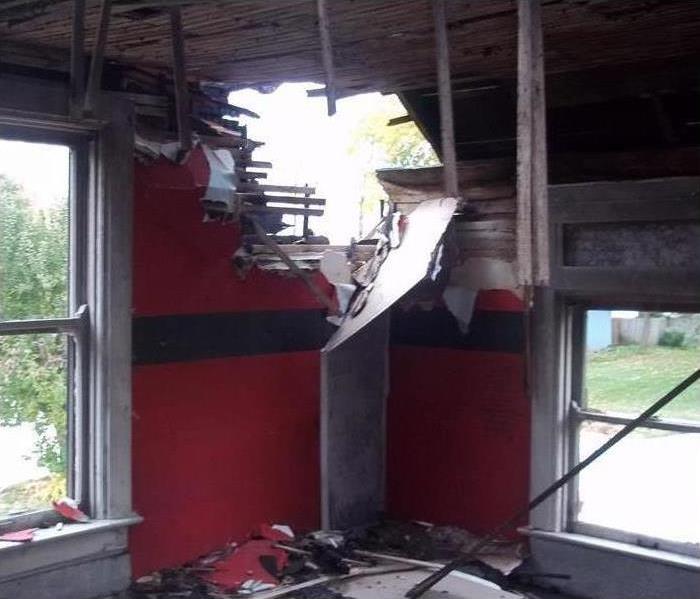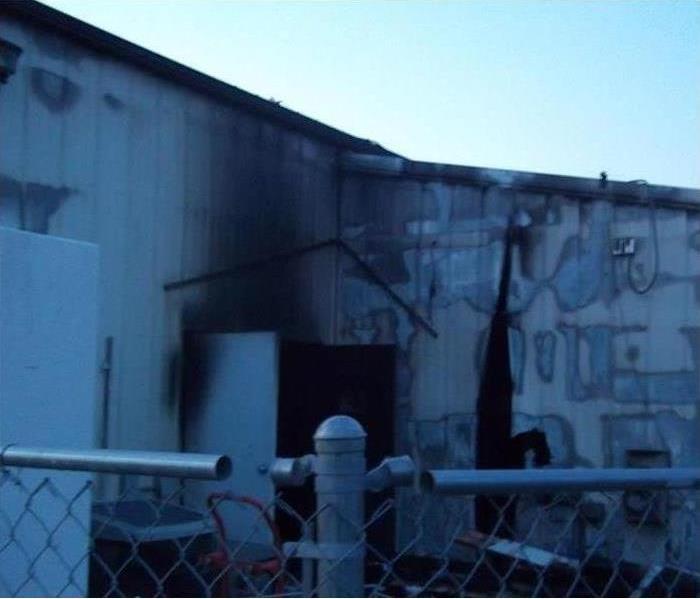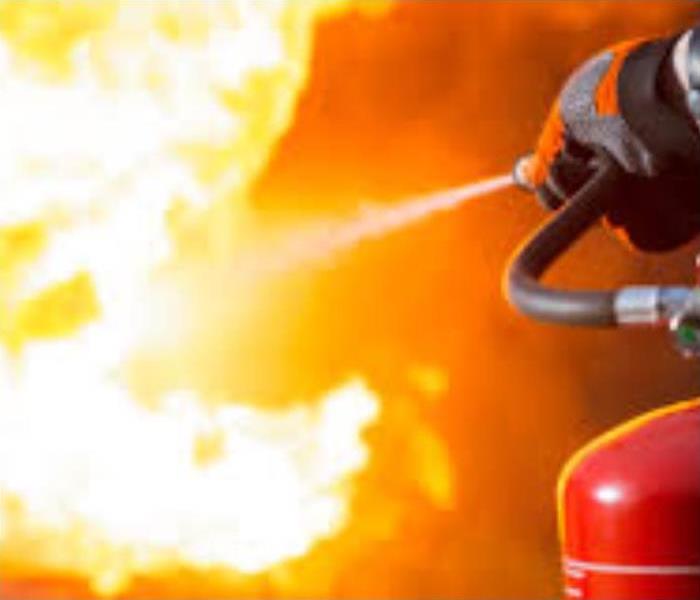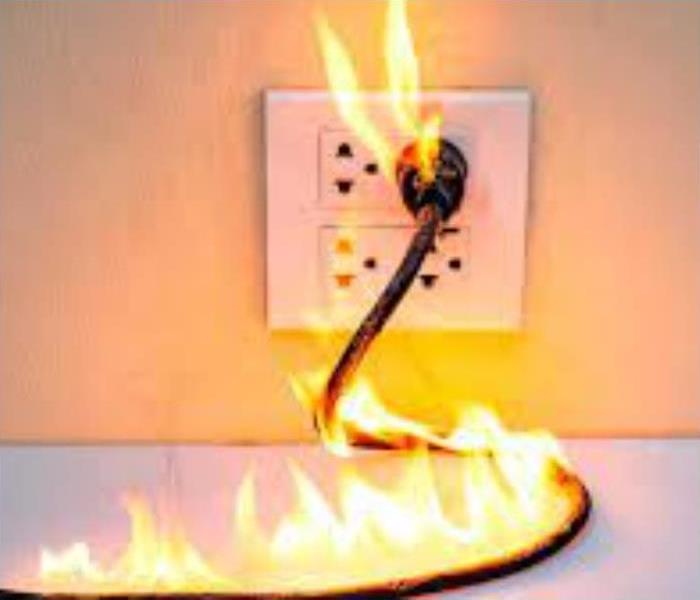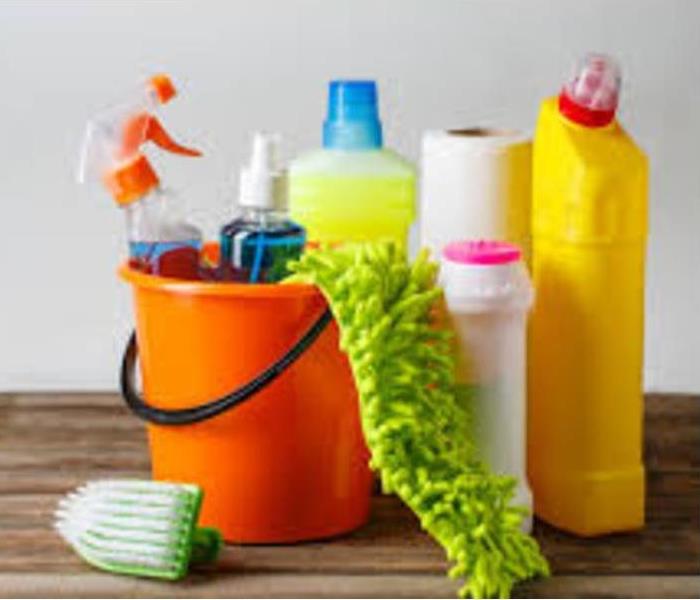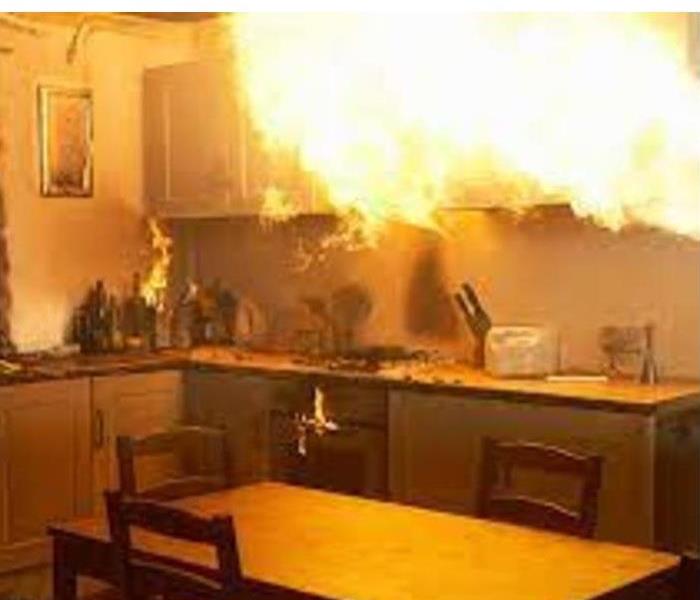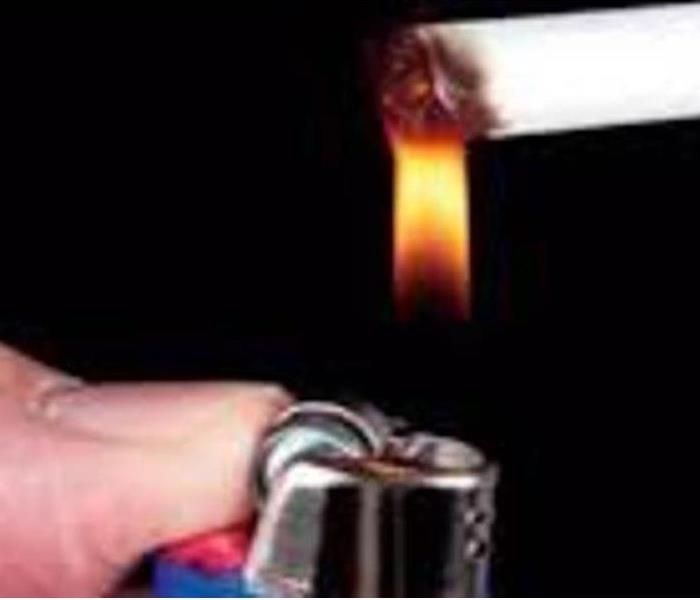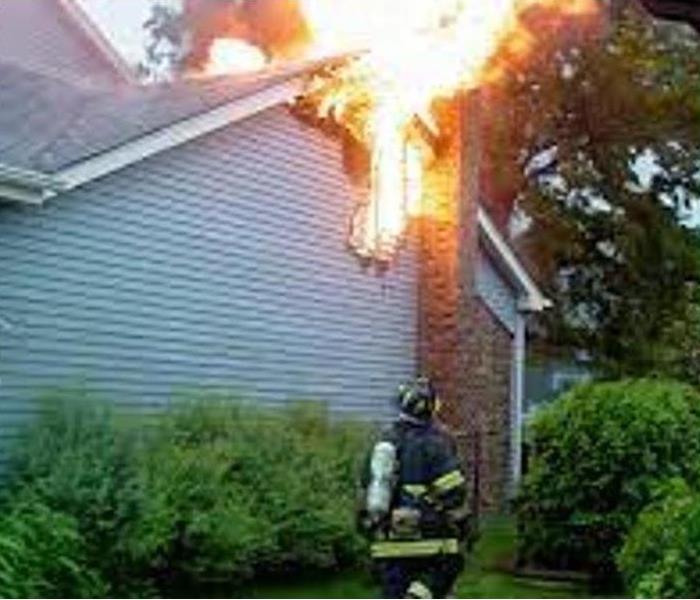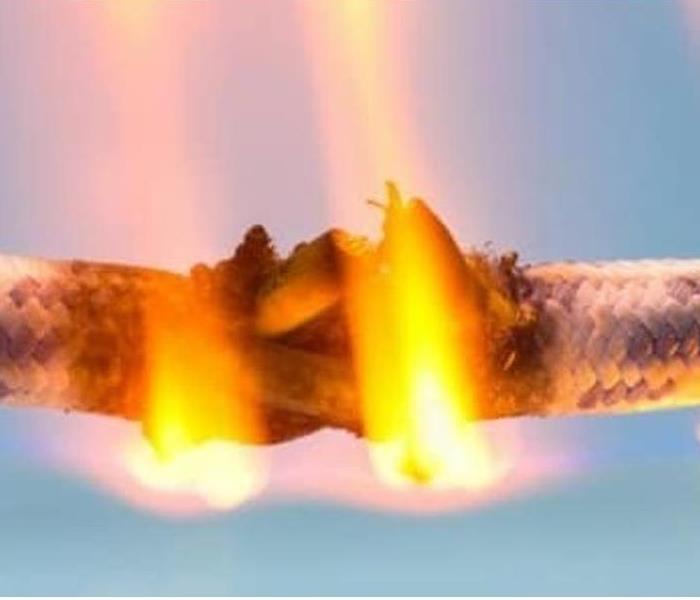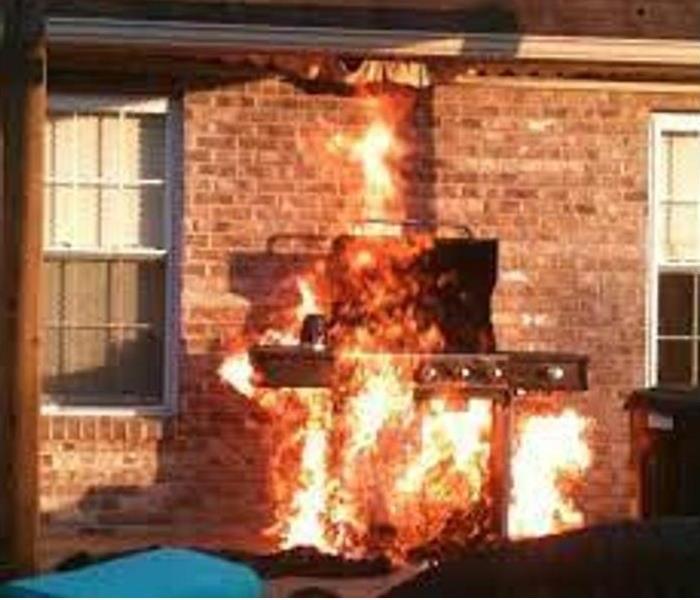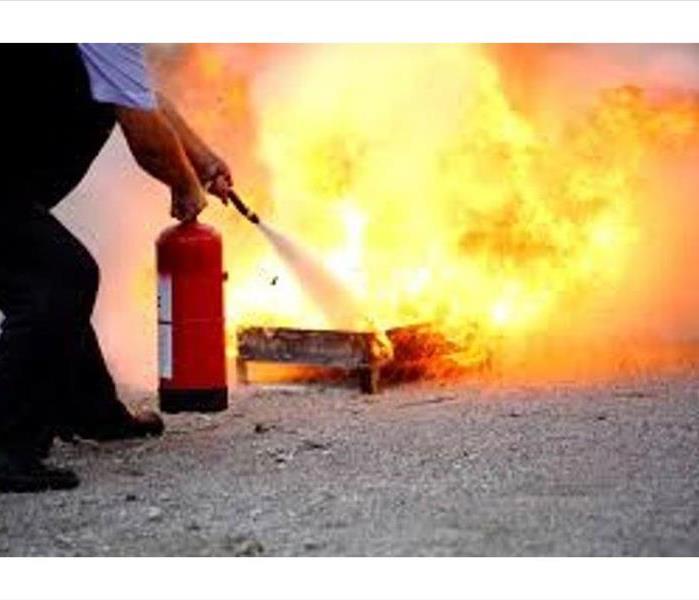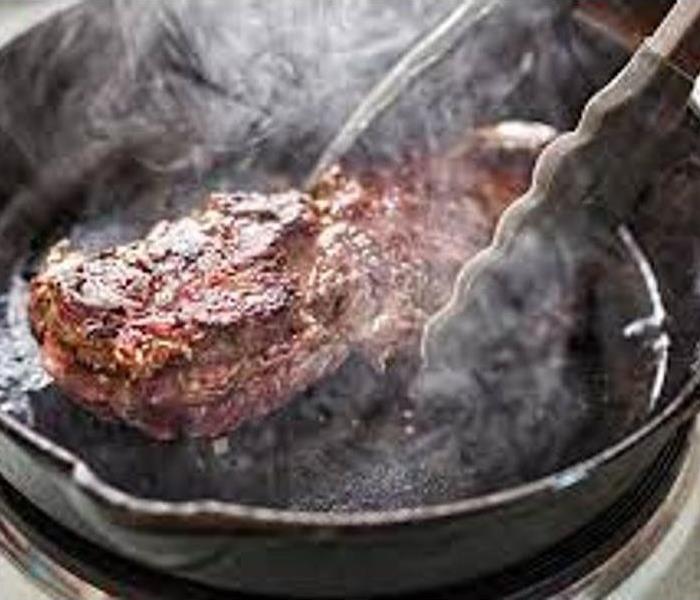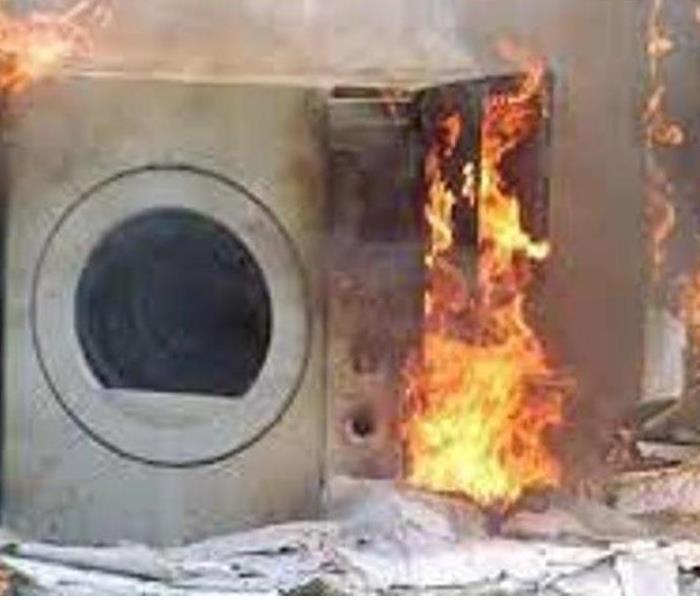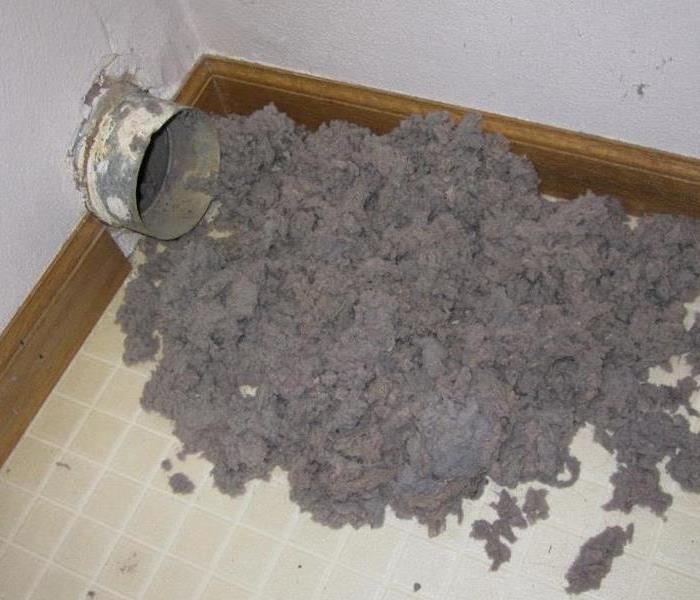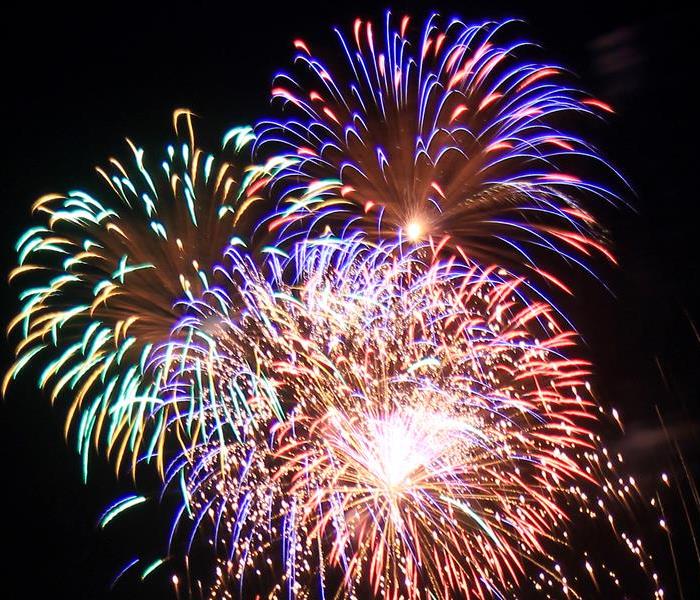If you notice that your dryer takes longer to dry laundry than it used to, that’s a clue that there may be a blockage in the dryer vent system. When you’re drying a load, go outside and look at the vent. Do you see or feel exhaust air? If not, the vent or the exhaust duct may be blocked with lint.
Start by disconnecting your dryer from the power source. And if you have a gas dryer, also turn off the gas valve near the dryer.
“Carefully slide the dryer away from the wall so that you can access the vent that’s typically in the back of the dryer,” Handel says. “If you have a gas dryer, take care not to overstretch or damage the gas line.”
Disconnect the duct from the dryer, and vacuum both the dryer and the duct—as much as you can access. Where possible, separate the duct into shorter sections for better access, then reassemble and attach the duct to the dryer. Be sure all joints in the duct are properly connected and held together with clamps or foil tape. Then return the dryer to its original spot and reconnect the power.
While you’re at it, clean behind the dryer and underneath it—lint builds up there, too. In winter, check after windy weather or snowstorms to be sure that snow isn’t blocking the outdoor vent.
4. Handle Chemical Stains With Care
Clothes stained with gas, cooking oil, cleaning agents, or other flammable chemicals or substances need special care. The Consumer Product Safety Commission recommends washing such stained clothing more than once to minimize volatile chemicals, then hanging to dry.
If you must use a dryer, use the lowest heat setting and a drying cycle that concludes with a cool-down period.
In the event that a fire does start, keep the dryer door closed to limit its oxygen supply—a fire needs oxygen to keep it going.
How Do You Put Out an Electrical Fire?
9/7/2021 (Permalink)
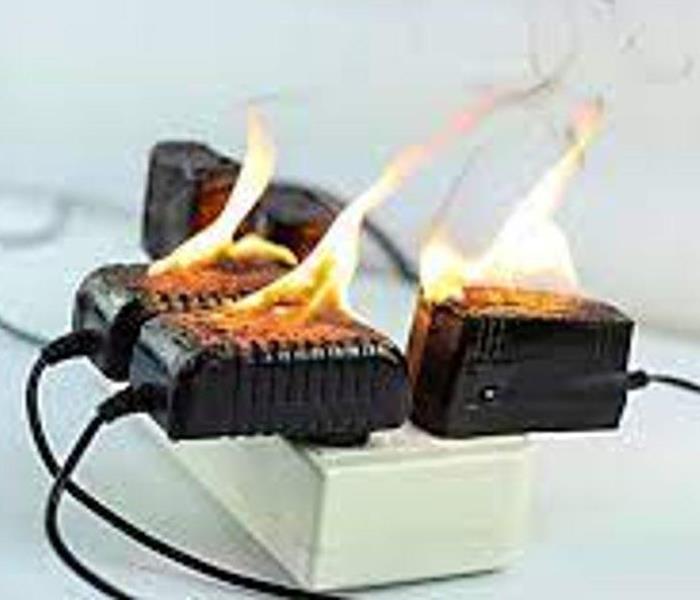 Preparing for how to put out an electrical fire, even if you don’t have a fire extinguisher, could be the difference between a minor accident and a ma
Preparing for how to put out an electrical fire, even if you don’t have a fire extinguisher, could be the difference between a minor accident and a ma
Taking precautions such as system upgrades is a smart way to lower your risk of electrical fires. However, it's important to know best practices should you ever be faced with one. Preparing for how to put out an electrical fire, even if you don’t have a fire extinguisher, could be the difference between a minor accident and a major catastrophe.
Put Your Safety First
If an electrical fire is growing quickly and you’re not able to turn the electricity off, you need to put your safety first. To ensure that you’ll have a backup if you’re not able to put out the fire yourself, call 911 right away and be sure to tell the dispatcher that it’s an electrical fire. Then before attempting to put out the fire yourself, make sure you can see two clear pathways to safety. Once one of those two pathways becomes blocked or unsafe to approach, evacuate immediately. It is not worth risking your life.
Disconnect the Electricity
First, disconnect the electricity from the source of the fire. If an appliance is a source, unplug it immediately. Unplugging it will reduce the risk that the flames will spread, and you can focus your efforts on that one source of the fire. If you can’t unplug the source, you’ll need to disconnect the electricity in your home. If you can safely get to your electrical panel, go there immediately and turn the power off. Once you’ve killed the electricity, you are no longer at risk of electrocution, and the source of the fire is now cut off.
Use Baking Soda for Small Electrical Fires
If the fire began in an appliance or an overloaded cord, once you’ve unplugged the power source, toss baking soda over the flames. Baking soda contains the chemical compound sodium bicarbonate, which is also in Class C fire extinguishers. Keeping an open box of baking soda easily accessible could become a lifesaver if a small appliance like a toaster or crockpot bursts into flames.
Never Use Water While the Power Is On
Although it may be your first impulse, never use water on any size electrical fire if your power is still on. Water conducts electricity, so if you toss water onto the flames, you are at risk of being badly shocked.
Microwave Oven Safety Tips
8/15/2021 (Permalink)
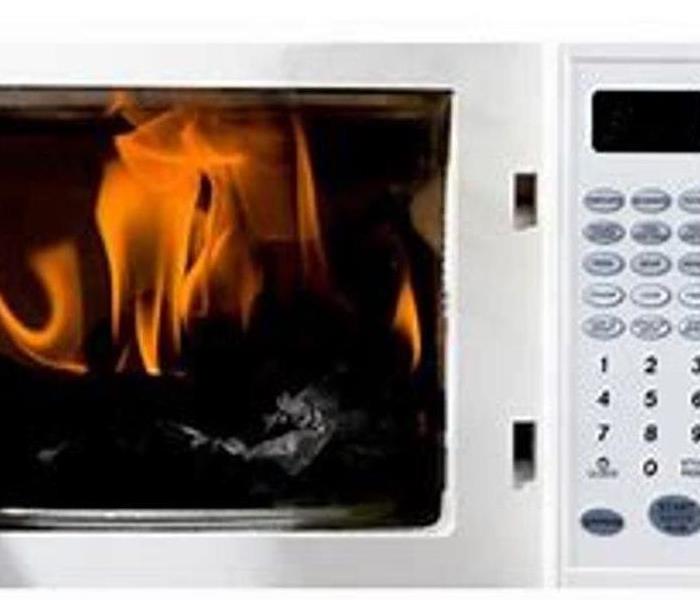 Follow These Tips When Using a Microwave Oven
Follow These Tips When Using a Microwave Oven
There may be no more convenient way to heat food than using a microwave oven. Even the most novice of chefs can feel like Wolfgang Puck just by hitting a few buttons. However, using a microwave oven can pose a fire hazard if you are not careful. So, take precautions to mitigate the risk.
Follow These Tips When Using a Microwave Oven
- Always follow the manufacturer’s installation and operating instructions as well as their safety precautions before using a new microwave oven.
- Never use an extension cord, plug your microwave oven directly into a wall socket.
- Always supervise children when they are using a microwave oven.
- To minimize the risk of fire, use only microwave-safe food containers or dishes. Never use aluminum foil or metal in a microwave oven. The metal can spark a fire.
- Never attempt to dry or sterilize baby bottles, clothes or blankets in microwave ovens, as these may result in a fire once removed from oven.
- Reduce fire potential by cleaning the microwave oven regularly. Always unplug the oven when cleaning and be sure to clean the inside and outer edge of the microwave.
- Never use recycled paper in microwave ovens, unless it is specifically approved for microwave use. Recycled products, including paper towels, have minute metal flecks; these can cause sparks and even flames.
- When cooking popcorn, heat according to the instructions, begin with the minimum time specified, as some microwaves can scorch popcorn in as little as two minutes.
Contact SERVPRO of Kendall County For Fire & Smoke Restoration Services
If your oven does catch fire, turn it off immediately and unplug the power cord if it is safe to do so. Do not open the door of the microwave. Wait until the fire dies out. Following these safety tips can help you avoid a potentially dangerous disaster. And, if your home requires fire and smoke damage restoration service, contact SERVPRO of Kendall County.
4 Key Steps for Homeowners Dealing with Fire Damage
8/14/2021 (Permalink)
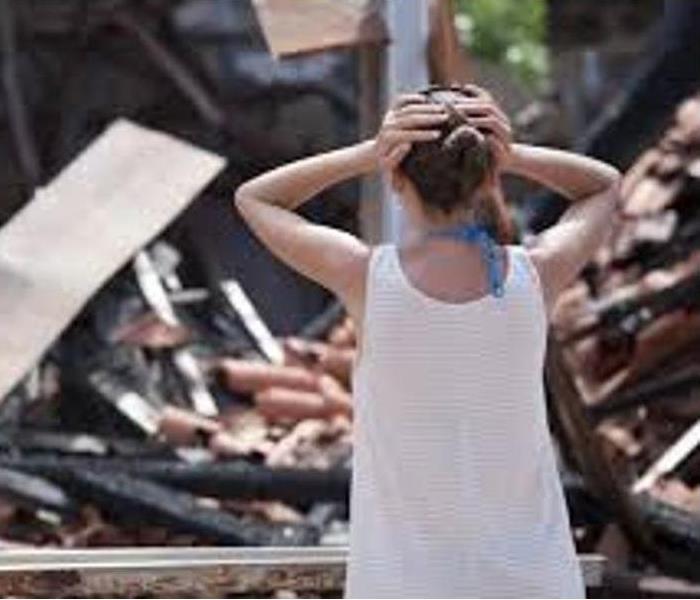 Fire is scary and cleanup can be stressful, but the best thing you can do now is to keep a level head and take on the next steps calmly and deliberate
Fire is scary and cleanup can be stressful, but the best thing you can do now is to keep a level head and take on the next steps calmly and deliberate
Contact your insurance company right away.
If you have insurance on your property, you’ll want to call them as soon as the fire is safely extinguished. Familiarize yourself with your insurance policy so that you know what is covered, and you can ensure you receive full and fair payment.
The best thing you can do is read through your insurance coverage and familiarize yourself with what it entails.
Each policy is different, so this will greatly affect how you decide to move forward.
In the case of home insurance, a majority of policies cover the value of the home as it was before the fire.
In the event of a total loss, the insurance company may settle by paying you the policy amount for the home in addition to whatever contents were in the home at the time of the fire.
Other expenses, like the demolition of the home, may also be covered.
Take pictures or videos to document everything that was damaged or destroyed so that you have proof to show the insurance company.
Don’t throw anything away, and make a list of all the damaged or lost items, too.
The more you have to back up your claim, the better.
If your adjuster can physically see the items, it makes the claims process much more seamless.
If you experienced a total loss and were unable to save any necessities, let your insurance company know. You may be entitled to a partial payout to recover items you need immediately.
2. Have the damage inspected by a third-party, licensed professional.
Generally speaking, having an insurance-assigned adjuster inspect a total loss after fire damage isn’t sufficient.
Because these adjusters work for the insurance company, they are inclined to make decisions based on the insurance company’s best interest rather than yours.
This is why it can be in your best interest to hire a licensed contractor or structural engineer to accurately evaluate the extent of the destruction, determine the integrity of the structure, and provide an honest estimate of the overall cost of repairs.
An adequate inspection should include:
- structure
- roof
- siding
- concrete and/or stucco
- plumbing
- heating systems
- framing
- interior walls
3. Decide if you should repair or demolish and rebuild
If you have insurance on the property, your policy may limit how you proceed. For example, what you consider a total loss may not be a total loss to the insurance company.
Determine the cost to demolish.
The average cost to repair fire damage is roughly $9,800, while the average cost to demolish a fire-damaged structure is $8,800.
However, your specific circumstance will determine which solution would be the smarter option.
4. Hire the right contractor for the job.
Whether you decide to repair or demolish your property, be strategic and thorough when choosing a contractor.
They should be experienced in the work being done as well as be familiar with working alongside insurance companies.
The Importance of Smoke Damage Restoration After a Fire
8/10/2021 (Permalink)
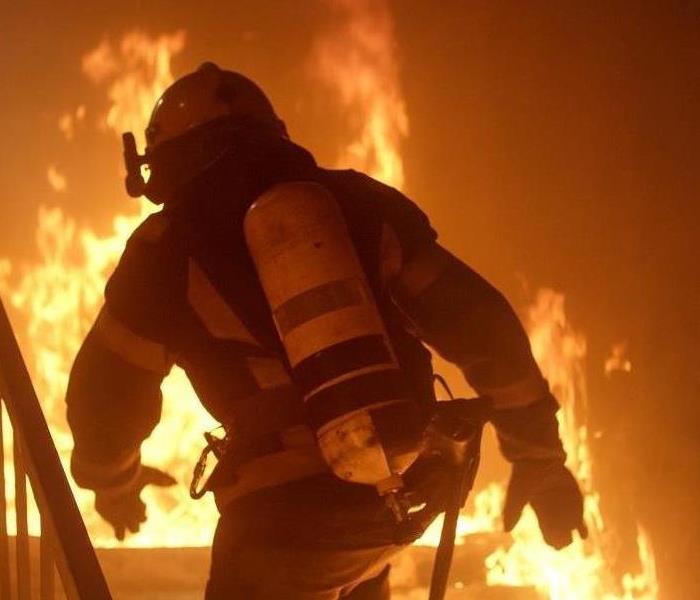 Fire wreaks havoc on your home not only while the flame is active, but also in the days and weeks that follow.
Fire wreaks havoc on your home not only while the flame is active, but also in the days and weeks that follow.
When a fire breaks out, it’s devastating not only for your family but for your home as well. Fire wreaks havoc on your home not only while the flame is active, but also in the days and weeks that follow. Whether caused by faulty wiring or a kitchen accident, it’s important to understand exactly how to restore your house during the aftermath of a fire. As long as you act quickly, SERVPRO of Kendall County can help you to repair what’s been lost. Here are a few things to keep in mind in regard to smoke damage following a fire.
Acting Quickly
The longer that you wait to call, the longer the repairs will take. Not only will the repairs take longer, but the damage will be more extensive as well. In the minutes after a fire, the acid from the soot begins to stain and discolor the surfaces of your home. Fabric materials are especially susceptible to this residue. As time ticks on, the damage only worsens. You’ll begin to see that the walls in your home are yellow in the hours following the fire. Metal fixtures may also start to rust. If you wait weeks to call SERVPRO of Kendall County, the surfaces in your home may be permanently damaged. Not only will the walls begin to weaken, but you’ll also find that they’re completely discolored. While a large portion of these items can be repaired, some may need to be replaced entirely.
Clearing the Odor
The smell of smoke is difficult to remove from a home. Even months after a house fire, the odor could linger if measures haven’t been taken to eliminate it. Soft surfaces are especially susceptible to the smell of smoke. Furniture, curtains, and carpet tend to soak up the smell and retain it. For this reason, calling in the help of SERVPRO of Kendall County can help. Experts understand how difficult it can be to deodorize your home following a fire. By acting quickly to remove the smoke residue from your home, it reduces the risk that the scent will linger.
Repairing Your Wiring
A portion of house fires are caused by faulty electrical equipment or wires. When this is the case, there’s a good chance that the wiring needs to be completely replaced. Not only will your electrical system need to be repaired, but it should be thoroughly inspected too. This ensures that there isn’t any additional corrosion to the outlets, wires, or cords. With the right help, you can repair the existing damage and prevent future flames from occurring.
Staining
The quicker that you act, the less likely your home is to experience permanent damage. Without proper attention, you may see that the wood and plastic surfaces in your home begin to warp. They may also become discolored. The metals, granite, and marble in your home could become tarnished, too. Don’t allow the fire to completely destroy the finishes in your house. Instead, act quickly to enlist the help of restoration specialists.
The cleanup following a house fire should be handled professionally. With SERVPRO of Kendall County handling your clean-up, you’ll have your home back in no time.
Common Mistakes Homeowners Make Following Fire Damage
8/9/2021 (Permalink)
 What to do after the fire department has left.
What to do after the fire department has left.
After the flames of a house fire have dwindled, you would think all the damage has been done. However, the damage can actually get worse if the right actions are not taken in the right order. Here are the 3 most common mistakes homeowners in Kendall County make following a fire that can actually lead to more damage:
Fire Damage In Kendall County
Getting Overwhelmed
Now, this is much easier said than done, but you cannot let yourself become overwhelmed. Most of the time, homeowners will assume the damages done to their home are at 100 percent, when, in actuality, it is only at 25 percent. We know it looks bad (really bad) once the flames are out. Charred materials, soot, and ash all leave behind a pretty devastating scene to the untrained eye, especially when it is your own home and belongings that you are seeing the remains of. With the right professional help, nearly anything and everything can be repaired and restored to preloss condition – which just so happens leads to the next most common (and costly) mistake.
Failing To Call A Certified Fire Damage Restoration Company, such as SERVPRO of Kendall County
Trying to save a little money by handling fire damage repair on your own, or having a friend try to help you when neither of you has the proper expertise or experience, will actually end up costing you more in the long run (both with time and money). You need to call a company that is licensed and certified in proper fire damage repair and restoration (the bonus is they are also a licensed general contractor) as soon as the fire is put out. With emergency response services, SERVPRO of Kendall County not only handles all the cleanup, but they can also rebuild your home and are available as soon as the disaster happens. Calling SERVPRO of Kendall County ensures that your home will be restored to its preloss condition as quickly as possible, all while mitigating any further damage. Consequently, you will be able to let go of any overwhelming feelings when you call SERVPRO of Kendall County because they will handle everything, and we mean everything, so this will also help you avoid mistake number one.
Not Keeping A Record of Damage
Your homeowner’s insurance will reimburse you for your losses in the fire as long as you have a detailed record of the damage. Photos and lists can help you keep an accurate inventory of your belongings, including what can be saved and what is a total loss. Once the fire department has deemed the premises safe to enter, you need to remove as many valuable belongings as possible to increase the odds of salvaging them. This is a good time to assess damages, gather personal belongings, and begin the task of recording damages for your insurance. Everything that was lost should be recorded, even down to food that was discarded.
The Dangers of Fire and Smoke Damage
3/22/2021 (Permalink)
 Smoke from a fire may cause lingering damage
Smoke from a fire may cause lingering damage
Fires are devastating on so many levels, from the damage caused by the flames to the properties that get reduced to ashes, to the injuries resulting from smoke exposure, heat, and escaping the devastation. But there are hidden dangers created by the fire and smoke that can linger long after the flames have died and the air clears up.
A Lingering Damage
During a home fire, the smoke and heat permeate throughout the house and can embed themselves deep into your furniture, wood, insulation, and other things. This strong odor often lingers and can be so overpowering that it causes nausea and coughing even days after the fire has been put out.
When a fire burns through toxic materials including plastic, the airborne pollutants can settle into your insulation and ductwork. Without proper fire restoration, these waste products can linger and make you sick.
It Stinks
Fire and smoke damage leaves an unpleasant odor in your furniture, carpets, drapes, and clothes that are difficult to remove. Unfortunately, though, a simple washing or scrubbing with laundry detergent won’t be enough to get rid of the smell. If you have smoke damage in your home, you’ll need special equipment such as an ozone generator to get rid of the odor—and that’s something only professionals like us have access to.
Also, the longer you wait, the worse it gets. If you leave it sitting long enough, you may never be able to get rid of the smell or even salvage anything.
Smoked and Weakened
Smoke can cause major damages to your home long after the flames have been put out. If you don’t clean it immediately, the smoke can weaken your walls and other wooden structures. Even if the wood wasn’t damaged by the fire, the smolder can seep into it and compromise the structure.
Moreover, it’s not just wood that’s at risk, as the smoke and heat damage can also weaken your home’s foundation and structure.
Fire damage restoration is serious work—one that should only be entrusted to certified professionals. Get in touch with us now and we’ll do our best to help deal with all your fire and smoke damage, as well as contents cleaning needs.
Hazards of Smoke and Soot
1/26/2021 (Permalink)
 There are many Hazards of Smoke and Soot damage
There are many Hazards of Smoke and Soot damage
You’ve suffered a fire, and finances aren’t looking so great… Your idea: Save a few bucks on fire restoration by handling some of the cleanings yourself. Good plan, right? Maybe not. Smoke and soot are more than a dirty little reminder of the disastrous fire that took its toll on your home.
Smoke and soot can be dangerous.
Leftover smoke and soot following a fire are more than just smelly and unsightly. Exposure during fire restoration efforts can adversely affect your health.
What makes smoke and soot so dangerous?
When combustion occurs during a fire, not all materials burn cleanly, resulting in smoke and soot. These waste products - solids, liquids, and gases - may be composed of various chemicals that are harmful to your health. Today’s modern structures hold an array of chemicals not found in early homes, including plastics, foams, fabrics, carpets, wood products, synthetic fabrics, wool, and asbestos-containing materials, which could result in health hazards that make fire restoration a dangerous and difficult task.
How can I be exposed?
Exposure to smoke and soot during fire restoration may occur via the skin and eyes, inhalation, and ingestion. Because airborne soot particulate is invisible, you may unknowingly be affected.
Smoke and soot must be professionally addressed to ensure safe, successful fire restoration results.
Unfortunately, safety risks from the fire do not end once the flames are extinguished. Fire damage can linger for years unless properly addressed. Adequate safety equipment (respiratory, skin, and eye protection) are essential in reducing possible exposure to dangerous smoke and soot, and quite possibly water and mold-related health issues resulting from firefighting efforts. Proper ventilation practices are also necessary to protect and restore indoor air quality following a fire, including HEPA filtration and adsorption (activated carbon) to preserve air quality. A bottle of degreaser and a dust mask is not enough! Professional tools, knowledge, and expertise are at the heart of thorough and safe fire restoration.
Outdoor Grill Safety
9/11/2020 (Permalink)
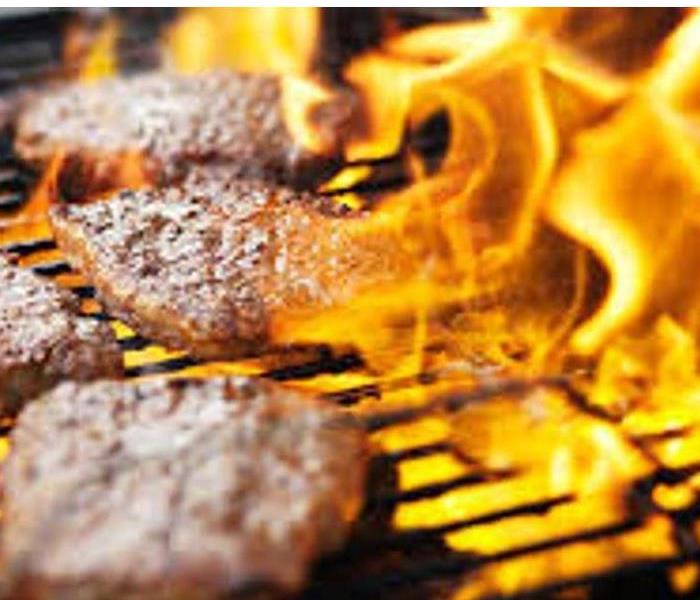 Safety tips whether you use a gas or charchol grill
Safety tips whether you use a gas or charchol grill
Gas Grill Safety
A leak or break is the leading factor contributing to gas grill-related fires.
- Check the gas cylinder hose for leaks before using it for the first time each year.
- Apply a light soap and water solution to the hose, which will quickly reveal escaping gas by releasing bubbles.
- If you smell or otherwise suspect a gas leak, and there is no flame, turn off the gas tank and grill. If the leak stops, get a professional to service it before using it again. Call the fire department if the leak does not stop.
- If you smell gas while cooking, get away from the grill immediately, and call the fire department. Do not attempt to move the grill.
- Never turn on the gas when the lid is closed. The gas may build up inside, and when ignited, the lid could blow off and cause injuries or burns.
- After cooking, make sure you completely close the valve on your gas grill.
- Always store gas grills – and propane tanks – outside and away from your house.
Charcoal Grill Safety
The leading cause of structure fires from the use of charcoal grills was leaving or placing an object that could burn too close to the grill.
- Charcoal grills can continue to remain hot for many hours after the flames extinguish. Avoid placing any burnable objects near the grill or moving the grill while the coals are hot. Keep combustible items that may be blown by the wind away from the grill.
- Check for rust damage in metal grills, which may make it possible for charcoal to fall through onto surfaces below and cause a fire.
- Purchase the proper starter fluid. Store out of reach from children and away from heat sources.
- Do not add charcoal starter fluid when coals or kindling have already been ignited. Never use any other flammable or combustible liquid to get the fire started.
- If the fire is too low, rekindle with dry kindling and more charcoal if needed. Avoid adding liquid fuel because it can cause a flash fire.
- Do not leave the grill unattended.
Here are some other important tips to help you keep danger away when you are enjoying food and fun.
Choose a safe location for your grill. Keep grills on a level surface more than ten feet away from the house, garage, or other structures. Keep children and pets away, as well as overhanging branches. Grills should not be used on a balcony or under an overhang. Avoid placing grills too close to combustible deck rails.
Grill outside only. Never use a grill in a garage, vehicle, tent, or other enclosed space, even if ventilated, due to the risk of harmful carbon monoxide buildup.
Keep the grill going on a cold day. During cool weather days, avoid wearing a scarf or other loose clothing that may catch on fire. Consumer Reports recommends shielding the grill from wind, placing it about ten feet from combustible surfaces and materials, and keeping the lid closed to retain as much heat as possible. Allow extra time for pre-heating the grill in colder weather and check temperatures of meat and fish with a meat thermometer to ensure that food is safe to eat.
Teach kids to stay safe. Make a “kid-free zone” of at least three feet around the grill and areas where hot food is prepared or carried. Children under five are especially vulnerable to burns from contact with a hot grill surface. Grill contact accounted for 37% of burns seen at emergency rooms in 2014 involving children under five.²
Remember post-grilling safety. Keep your grill clean by removing grease or fat buildup from the grills and in trays below the grill. If you grill with charcoal and need to dispose of the coals, soak them in water to extinguish them before disposing in a metal container. Otherwise, cover the grill tightly and close the vents, this should extinguish the coals and whatever is left will be ready for next time.
How to Prevent a Clothes Dryer Fire
9/9/2020 (Permalink)
 Follow these 5 Tips on how to avoid a dryer fire
Follow these 5 Tips on how to avoid a dryer fire
Avoid the dangers of clothes dryer fires with these five tips and call an expert fire damage repair company to restore your home if your dryer does catch on fire.
Clean Lint Filters After Each Load
It cannot be stressed enough that you should always clean the lint filter before tossing in a new load of laundry. If a lint filter isn’t cleaned after each load, it can cause a build-up of lint that could potentially become a fire hazard. Even if there’s only a small amount of fluff on the filter, you should clean it anyway to keep up with the habit.
Not only does cleaning your dryer’s lint filter help prevent a fire, but it can also optimize your dryer’s performance and help your laundry dry faster.
Clean Dryer Ducts Once a Year
At least once a year, it’s a smart move to take a look at your clothes dryer’s ducts. You can often find blockages of lint in or around your dryer’s ducts. Take the time once a year to disconnect the power from your dryer, and if you have a gas dryer, also shut the valve, then inspect and clean the back of your machine.
Use a cloth rag and a broom to sweep up the lint resting inside and out of the ducts. Lint will find any nook and cranny to build up in.
Use Care When Handling Chemical Stains
It’s easy to throw a stained garment into the dryer without considering how the stain could react to intense heat, but you can never be too safe when it comes to preventing a clothes dryer fire in your home. Clothes get all kinds of stains on them – including gas, cooking oil, cleaning agents, or other flammable chemicals.
Keep the Area Around Your Dryer Clean
The last thing you want to do is feed a dryer fire with flammable items. Wherever you keep your dryer in your home, be sure to keep the area around it clutter-free. Your laundry space may seem like an excellent place to use as storage, but it’s not when you consider the risks. Avoid storing cleaning products, boxes, and other highly flammable items near your dryer.
Don’t Overload Your Dryer
It’s easy to let dirty laundry pile up and then overload your clothes dryer in an attempt to catch up on it. Even if it feels like a good idea, you could be putting yourself and your home at a higher risk. Split your loads up, so your dryer doesn’t go into overdrive. The more clothes that are in the dryer, the longer it takes to dry and the hotter it gets. Overheating could potentially lead to a fire sparking inside your home.
What To Do After a Residential Fire
8/31/2020 (Permalink)
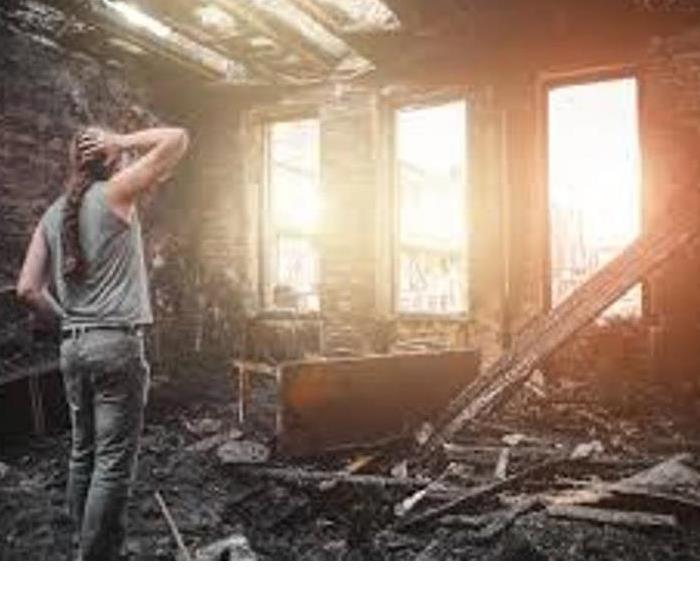 Be prepared after a residential fire disaster.
Be prepared after a residential fire disaster.
It’s hard to imagine the damage and destruction a fire can leave in its wake. Even small ones can require extensive repair and restoration.
Hopefully, you’ll never have to deal with picking up the pieces after a damaging fire. But unfortunately, we won’t all be so lucky. As recent as 2018, there were more than 1.3 million fires in America, resulting in $25 billion in losses. On average, a residential fire occurs every 87 seconds in the United States.
It’s important to be prepared. Here are three steps you can take toward fire damage repair and restoration after a fire:
- Beware of health hazards
- Consider smoke damage
- Call a fire damage restoration company
1. Beware of Health Hazards
Some people mistakenly believe that once a fire is put out, the danger is gone. However, homes that have suffered from fire damage can contain many hidden health hazards.
House fires typically release harmful toxins into the air. These are harmful to breathe in; some may even cause cancer. You shouldn’t re-enter your home after a fire until the fire department declares that it’s safe to do so.
If you have to re-enter your home for whatever reason, make sure you’re wearing appropriate protective gear. Keep in mind that if you have to board up your home after a fire, it will take even longer for those toxins to exit the house.
You’ll also need to make safe decisions about which items in your home you can keep and which ones you need to let go of. Think first about the essentials:
- Food: Throw away any open containers of food in your cupboards and cabinets. If any food has been exposed to heat, water, or smoke, then throw it away, regardless of if it’s open or not. If your refrigerator lost power during or after the fire, then throw away all of the food in your fridge.
- Medicine: Carefully inspect any medicine you’re hoping to keep. If there are any signs of smoke damage or fire extinguisher residue, it’s best to throw it away.
- Clothing: Throw away any clothing that has been burned or has soot on it. Remember, some toxins can enter the body through the skin.
2. Consider Smoke Damage
Your first priority after a fire is making sure everyone you love is safe. But after everyone is accounted for, what will you focus on next?
Your thoughts may turn to your possessions, especially any valuables or keepsakes you’re hoping to salvage. As you learn more about the extent of the damage, you may consider what essentials you’ll need until your home is restored.
It may take a while before you start thinking about your home itself. Don’t delay for too long. Smoke damage sets in quickly and needs to be handled in a timely manner.
Smoke particles can seep into your walls, floors, curtains, furniture, bedding, and more, allowing the smell of smoke to linger for months after the fire. The sooner you address smoke damage, the more likely you won’t have to deal with long-lasting or permanent smoke damage issues.
3. Call a Fire Damage Restoration Company
Most people grow up practicing fire drills so they know what to do during a fire, but no one practices what to do after a fire. SERVPRO of Kendall County has the skills, experience, and training to help you restore your home.
FIRE DAMAGE RESTORATION TIPS
8/26/2020 (Permalink)
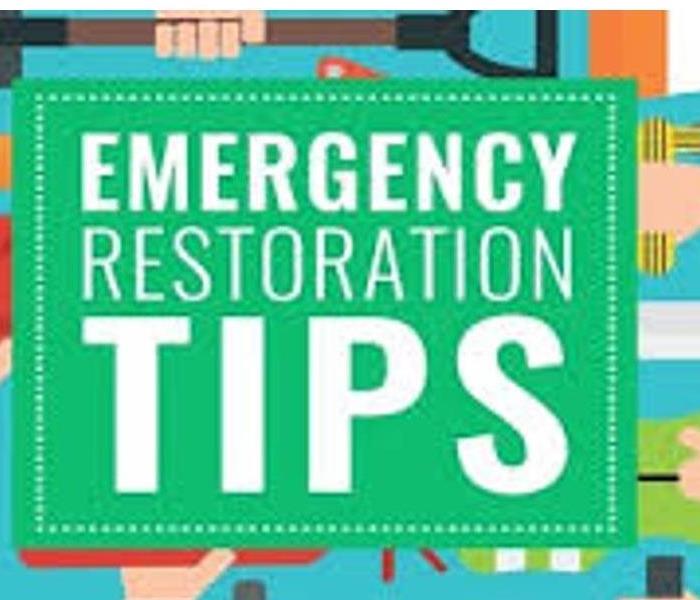 If you have experienced a fire here are some tips to help clean up.
If you have experienced a fire here are some tips to help clean up.
REPAIRING SMOKE DAMAGE TO WALLS
With fires, there will always be a degree of smoke damage to your walls, wallpaper, and paint. If the smoke damage is not too serious, you should be able to scrub it clean with detergents and bleach. Note: soot from smoke damage is greasy stuff so you should always try to dust as much of it off from a surface before trying to scrub it clean. Often, you’ll want to repaint, but make sure all surfaces are clean and dry before painting.
GETTING RID OF MOLD & MILDEW
Another huge issue in fire damage restoration is actually introduced by the water used to extinguish a fire. This problem is mold and mildew and requires special attention. We highly recommend SERVPRO of Kendall County to deal with mold and mildew, because it can cause serious health effects, and can contaminate furniture, carpets, clothing, mattresses, walls, and vents. The best thing you can do immediately is air out every room and clean out all vents and filters.
REPAIRING FLOORING & CARPET
With all the water that is involved in putting out a fire, your floors and carpets will end up absorbing the worst of it. In almost every case, it’s recommended that you pull up any carpets that have water damage and replace them. Water can also seep underneath vinyl flooring and into cracks of hardwood, and will need to be addressed. If you have experience with flooring, you can lift it up and clean under them, but you may want to call a SERVPRO of Kendall County to assist you.
CLEANING CLOTHING
Cleaning smoke damage from clothing is one of the biggest jobs you’ll find after a fire. Our biggest tip is to make sure you don’t smear the greasy soot into the clothing or just throw the smoky clothes into the wash. Often times dry cleaning is the best bet, and you should ask around local dry cleaners to see if any have experience with post-fire laundry.
CLEANING DISHES
Dishes are also important items to clean thoroughly after a fire because they will be in contact with your food and can cause health problems. Scrub all dishes well, let them soak in a solution of bleach and water (2 tablespoons of bleach per gallon) for at least 20 minutes, and scrub some more for safety. When in doubt, if a dish, pot, or pan won’t come clean, cut your losses and throw it out – (especially rubber or wooden dishes that absorb smoke).
Furniture cleaning after a fire in Kendall County
8/10/2020 (Permalink)
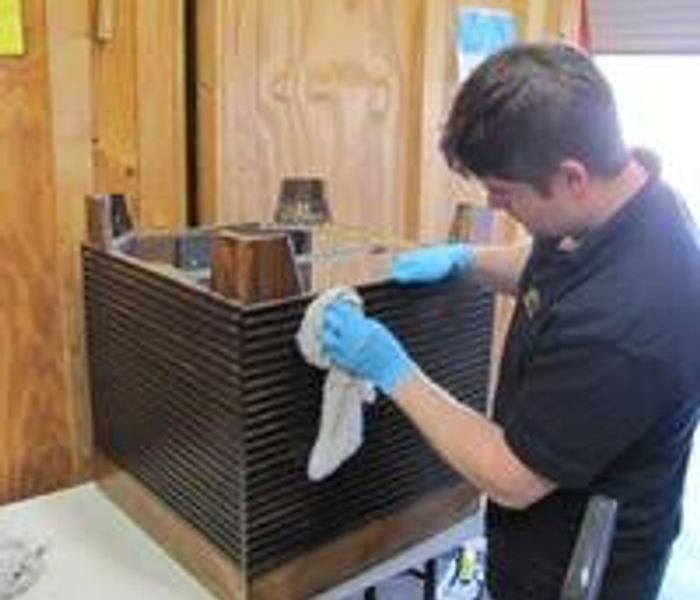 Cleaning furniture with soot and smoke damage.
Cleaning furniture with soot and smoke damage.
Furniture restoration following a fire, smoke, and water damage begins with a damage assessment. SERVPRO of Kendall County will determine the extent of your furniture damage and determine the cost to repair versus the cost to replace furniture, so you can have reasonable expectations about the restoration of your furniture and our contents restoration services. We will start with the inspection and provide you with an estimate before we begin the contents restoration process.
We are an experienced furniture and upholstery contents restoration company and offer inspections, contents estimates, direct insurance billing, and prompt and professional cleanup and restoration.
SERVPRO of Kendall County restores upholstered, wood, leather furniture, and fabrics, including draperies, rugs and carpeting from water damage, fire damage, and smoke damage. Our highly-trained technicians use specialized cleaning and contents restoration methods to restore your contents.
Had a fire in Oswego, IL? SERVPRO can help!
7/13/2020 (Permalink)
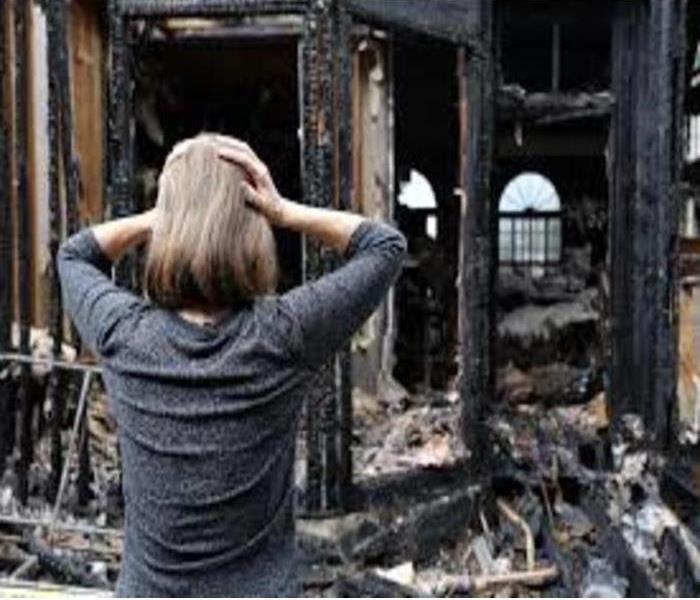 When you need help with fire restoration, call SERVPRO of Kendall County (630) 554-2280
When you need help with fire restoration, call SERVPRO of Kendall County (630) 554-2280
A fire can be an extremely harrowing experience and major inconvenience. Even the smallest issue can cause extensive damage, as flames, smoke, heat, and the water used to put out flames later become odors, stains, and mold threats.
Saving your home is our area of expertise. We are the Fire and Water Restoration Professionals you can count on when disaster big or small strikes in your home. We put our expertise and experience to work coupled with the latest technology and processes to ensure customer satisfaction you can trust.
At SERVPRO of Kendall County, we have the knowledge and experience to deal with all aspects of fire damage. As soon as we are on the scene, we act quickly and efficiently to secure the fire scene through our expert structural securement, board-up, and tarping to prevent further damage. We then work to clear out the debris, soot, and water damage. Afterwards, we initiate the construction and reconstruction work necessary to bring your home back to order. "Like it never even happened."
In each phase of our restoration process we take deliberate steps to restore your home to it’s original comfortable state.
Dryer Vent Cleaning
5/18/2018 (Permalink)
Dryer vent cleaning prevents fires. If you live in Oswego or any other area within Kendall County, you will want to make sure that your home is completely safe. Whether by flooding, fire or some other mishap, there are plenty of ways that your property can be threatened. One of the best ways to ensure that you are prepared for a catastrophic emergency is always to have a local residential and commercial property cleanup and restoration service.
Dryer Vent Cleaning Prevents Fires
Keep your property from sustaining irreversible fire damage. Making sure your dryer vents are clean and free from obstruction will help keep your property safe from the possibility of a fire. It's also an excellent precaution to take to keep the air in the building from getting choked up with dust, lint and other health hazards that can accumulate in a dryer vent.
Get Help from a Local Cleanup and Restoration Service
It's up to you to contact an expert local cleaning and fire restoration service to ensure that your vents get cleaned in a correct and timely fashion. When you are in doubt as to whether the vents or other areas in your home are functioning correctly, a good, thorough cleaning is never a bad idea.
Even if it turns out that your property is not quite yet due for a full cleaning, a reputable local cleanup service can help such as removing any excess pollen or debris that has accumulated in the vents. This way, you can save a great deal of time, money and worry by taking timely preventative measures. Keeping the proper level of air quality in your home or commercial building will go a long way toward keeping the structure safe for your family or employees to inhabit. An expert local service will ultimately save you a great deal of time and stress.
Expert Help for Dryer Vent Cleaning Is Available
At SERVPRO of Kendall County, we know that dryer vent cleaning in Oswego prevents fires. This is only one of the many services that we can provide for you to make sure that your home or commercial property will be safe against the event of an unforeseen mishap or emergency. If an emergency should befall your property, you'll want to call a service that can get to you in a prompt and timely manner.
Summer Safety
5/11/2018 (Permalink)
Summer is filled with barbecues, parades and fireworks displays; but along with all the festivities are plenty of visits to emergency room- especially during July.
There is nothing like firing up the grill during the summer months! Did you know, July is the peak month for grill fires? A backyard barbeque can become dangerous quickly if proper safety precautions aren’t considered. Your local SERVPRO of Kendall County Professionals want you to have an enjoyable and safe summer. Consider the following tips to help ensure your summer celebrations are fun and disaster-free!
· Propane and charcoal BBQ grills should only be used outdoors
· The grill should be placed well away from the home, deck railings, and out from under eaves and overhanging branches.
· Keep children and pets away from grill area.
· Keep your grill clean by removing grease or fat buildup from the grills and in trays below the grill.
· Never leave your grill unattended.
· When using a charcoal grill, let the coals completely cool before disposing in a metal container.
· Anyone using fireworks or standing nearby should wear protective eyewear.
Each year fireworks are responsible for thousands of house fires with millions of dollars in property damage.
· Do not try to re-light or handle malfunctioning fireworks. Keep a bucket of water nearby to fully extinguish fireworks that don’t go off or in case of fire. Children should never pick up fireworks that may be left over as they may still be active.
Kendall County Residential Fire
5/10/2018 (Permalink)
Small Fires can Pose High Risks
While you should never pour water on a grease fire, nor on an electrical one, many times that is a person's first reaction anywhere. This can cause even more damage. Cooking fires and electrical shorts are common causes. It can also create physical risks to people standing nearby. With grease fires, baking soda should be poured into the skillet and any grease or oil that has caught fire outside of the cooking pan or skillet instead of water.
With electrical fires, the appliance should be unplugged if it can be safely done, but not by pulling on the cord. This can cause the cord to snap, leaving the plug, without the cord, still in the outlet. The power to the area where this is happening should be shut off at the fuse box as quickly as possible to eliminate the hazard.
After the Fire is Out, It's Time to Repair the Damage
When there's been a localized fire, you should have someone assess the damages for you. This can often help with insurance documentation. Landlords, if you are renting, will also appreciate if you inform them of the fire, and they can see the damage for themselves. It is every landlord's worst nightmare to have a fire or flood damage their properties. If they can see the amount of damage, they can rest easier knowing the extent of the repairs required.
Damage can range from blackened walls and countertops to heavily burned surfaces, electrical wires being damaged and requiring replacement, to floors suffering damage so severe they must be replaced to be safe again. Having experts conduct the repairs needed can greatly facilitate insurance claims being resolved, as well.
Have Questions about Fire, Smoke or Soot Damage?
Call Us Today – SERVPRO of Kendall County 630-554-2280
Fire Damaged Contents in Kendall County
4/17/2018 (Permalink)
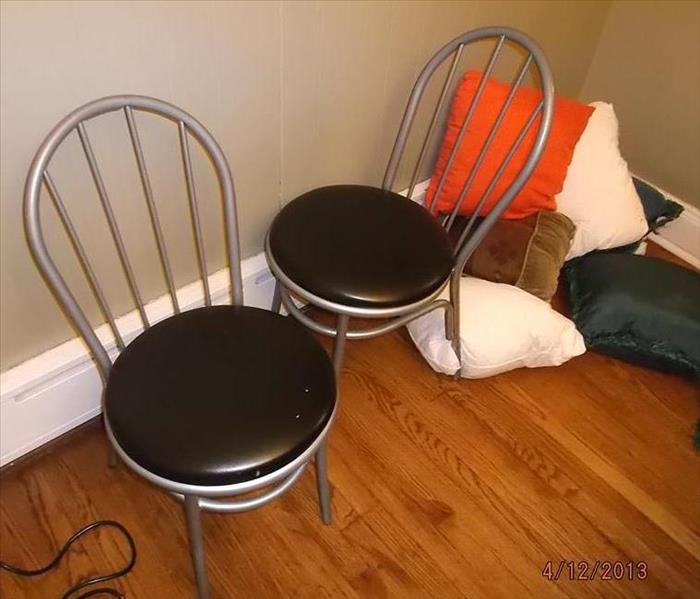 Smoke damaged contents from a Kitchen fire in Oswego
Smoke damaged contents from a Kitchen fire in Oswego
When it comes to cleaning smoked-damaged contents after a residential or commercial fire here in Kendall County, the variety of contents in a typical job requires restorers to utilize a variety of cleaning methods.
Here is a quick description of each method of content cleaning:
- Dry Cleaning - Removes light to medium nongrease-based soils.
- Wet Cleaning - Removes moderate to heavy residues. The process involves cleaning using water, with or without a cleaning agent.
- Spray and Wipe - Apply a cleaning product using a spray bottle. After spraying, wipe the surface with a clean white towel. This method is effective for materials possibly damaged if saturated with cleaning product.
- Foam Cleaning - Effective for light residues or delicate materials. Clean with the foam of a cleaning agent rather than the liquid
- Abrasive Cleaning - Agitates the surface being cleaned. Apply a cleaning product containing abrasive ingredients
- Immersion Cleaning - Dipping contents items into a bath of cleaning product. This bath is an ultrasonic tank filled with water and cleaning solution. High-frequency sound waves then create high temperatures and microscopic jet streams of fluid to agitate and scrub contents.
SERVPRO recommends that you DO NOT attempt to clean smoke-damaged surfaces or contents yourself, and call the professionals here at SERVPRO of Kendall County. Our office number is (630)554-2280.
SERVPRO of Kendall County - 5 Star Rating - Fire Victim
3/29/2016 (Permalink)
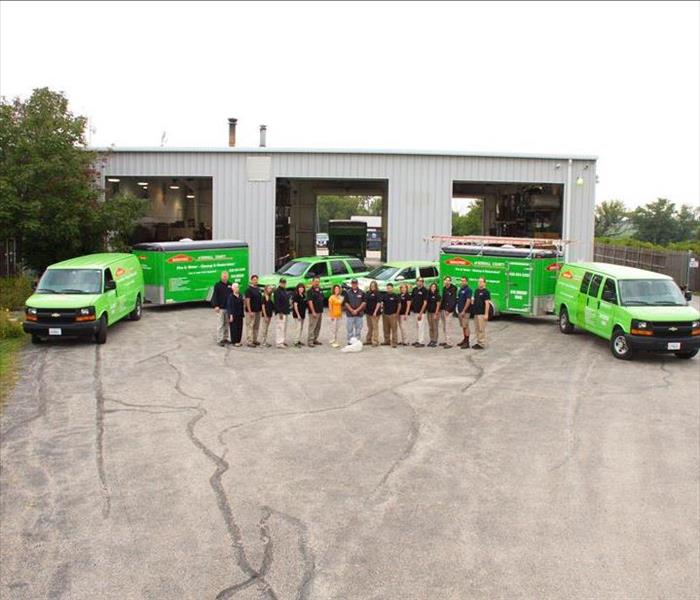 Lock 630.554.2280 into your phone!
Lock 630.554.2280 into your phone!
Its been a little over 2 weeks since our fire. I dont know what we would do without Steve and his entire team!! From day 1, we havent been alone. They have been here every step of the way! They are a company with so much integrity. Everyone that we have met thus far have touched our hearts in so many ways!! Its not just a job for these people, they All truly care!! Its never what we cant do, its what we can do!!! There is not a day that goes by without a story I tell friends or family about our SERVPRO Team!! They dont miss a beat!!





 24/7 Emergency Service
24/7 Emergency Service
